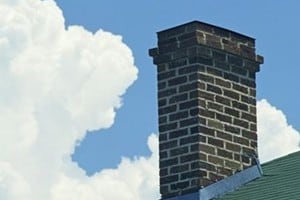
Whether you are maintaining a simple home HVAC system or dealing with a large commercial facility’s ventilation needs, air duct cleaning is an absolute must to keep the air you are breathing as pure and healthy as possible. There are, however, many different air duct cleaning options available, each with its own set of advantages in keeping an HVAC system clean and healthy. In this article, we’ll compare some of the most popular and effective methods of both filtration and non-filtration based air duct cleaning.
Filtration-Based Air Duct Cleaning
Most forms of air duct cleaning rely on some kind of filter built into the ventilation system itself. These filters physically remove particles and gases from the air that is circulated in the air ducts in order to maintain purity and cleanliness. Much like with stand-alone air purifiers, there are multiple types of filters that can be used in these systems to specifically target different contaminants.
HEPA Filters: HEPA filters are the most basic form of filtration usually employed in air duct systems. These filters will remove 99.97% of any solid particles that are greater than 0.3 microns in diameter. HEPA filtration is excellent for targeting pollen, airborne matter, dust and other such particles, as well as most mold spores.
Carbon Filtration: Though HEPA filters are excellent for solid particles, they cannot reduce levels of gases in the air. For this, carbon filtration is required. Carbon filters used the naturally porous properties of refined carbon combined with special chemical treatments to trap and bind potentially harmful gases in the air. This type of filtration is especially important in industrial facilities, where harmful gases can easily build up from even basic manufacturing processes.
Titanium Dioxide Filtration: Used in conjunction with UV lights (discussed independently below), titanium dioxide filters form what is known as a photocatalytic filtration system. This type of system uses water in the presence of organic gases and the titanium catalyst to form hydroxyl molecules, which have properties useful in both neutralizing harmful gases and killing microorganisms,such as bacteria and viruses.
Non Filtration-Based Air Duct Cleaning
Though many forms of air duct cleaning rely solely on some type of filter, there are others that do not. Following are some of the most non-filter methods of keeping air ducts clean.
UV Light: Though most effective when used in conjunction with a titanium dioxide filter, UV light on its own is very effective for neutralizing viruses, bacteria and mold spores in the air. Many hospitals make use of UV lights to maintain cleanroom environments, and this same principle can be applied in any home or commercial facility.
Probiotic Sprays: A recently developed method of keeping air ducts clean is to use probiotics, or beneficial bacteria, to populate the surface inside of an HVAC system. While this may seem counterintuitive at first, it is extremely effective, as the beneficial bacteria take up space and food sources that otherwise would allow harmful bacterial colonies to grow. To learn more about this relatively new development in the world of air purification, check out our line of probiotic air purifiers.
Professional Cleaning: Though the rest of these options are excellent for using to maintain clean air ducts in the future, it may be that you will need a physical air duct cleaning before you can successfully implement any of them. Air ducts that have gone uncleaned for long periods of time may require a thorough cleaning before new filters or non-filtration cleaning methods can be put into place. This kind of cleaning can cost several hundred dollars, which is one of the best arguments for making use of at least one other type of passive cleaning method.